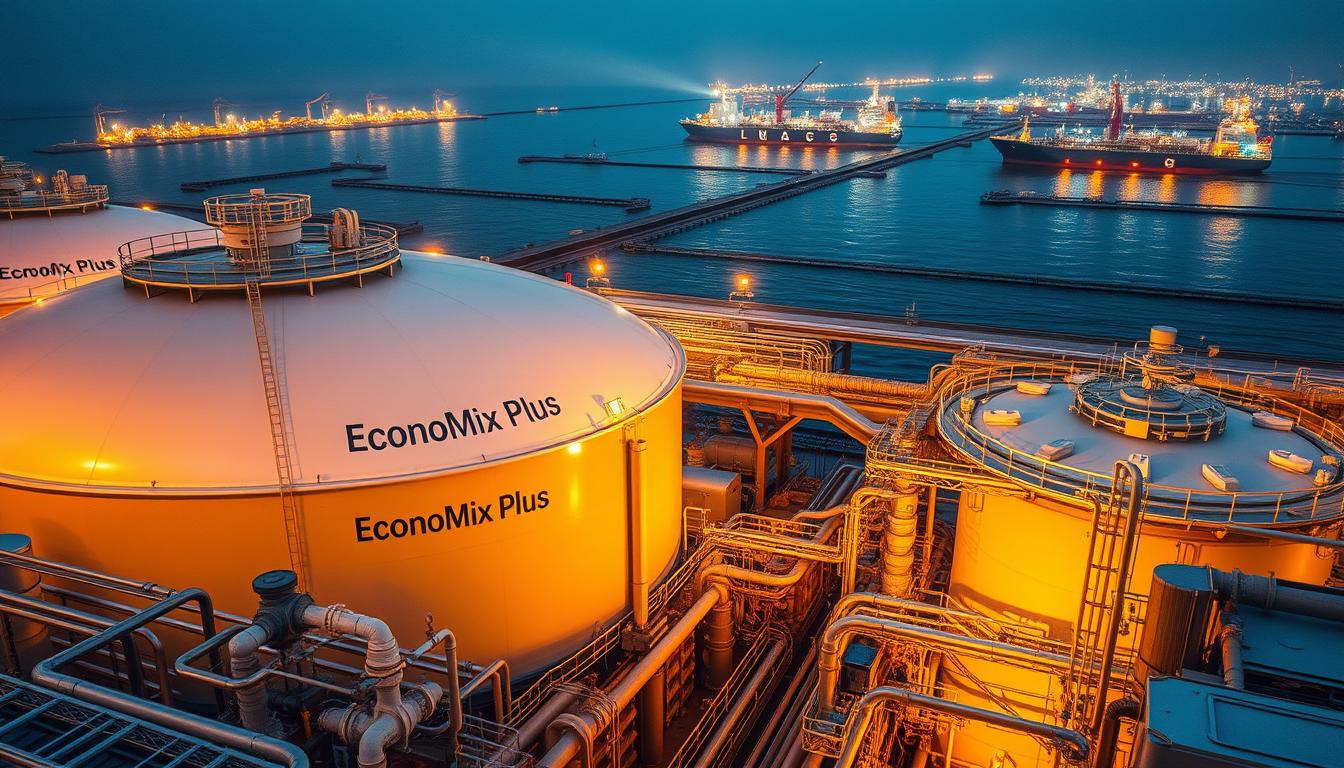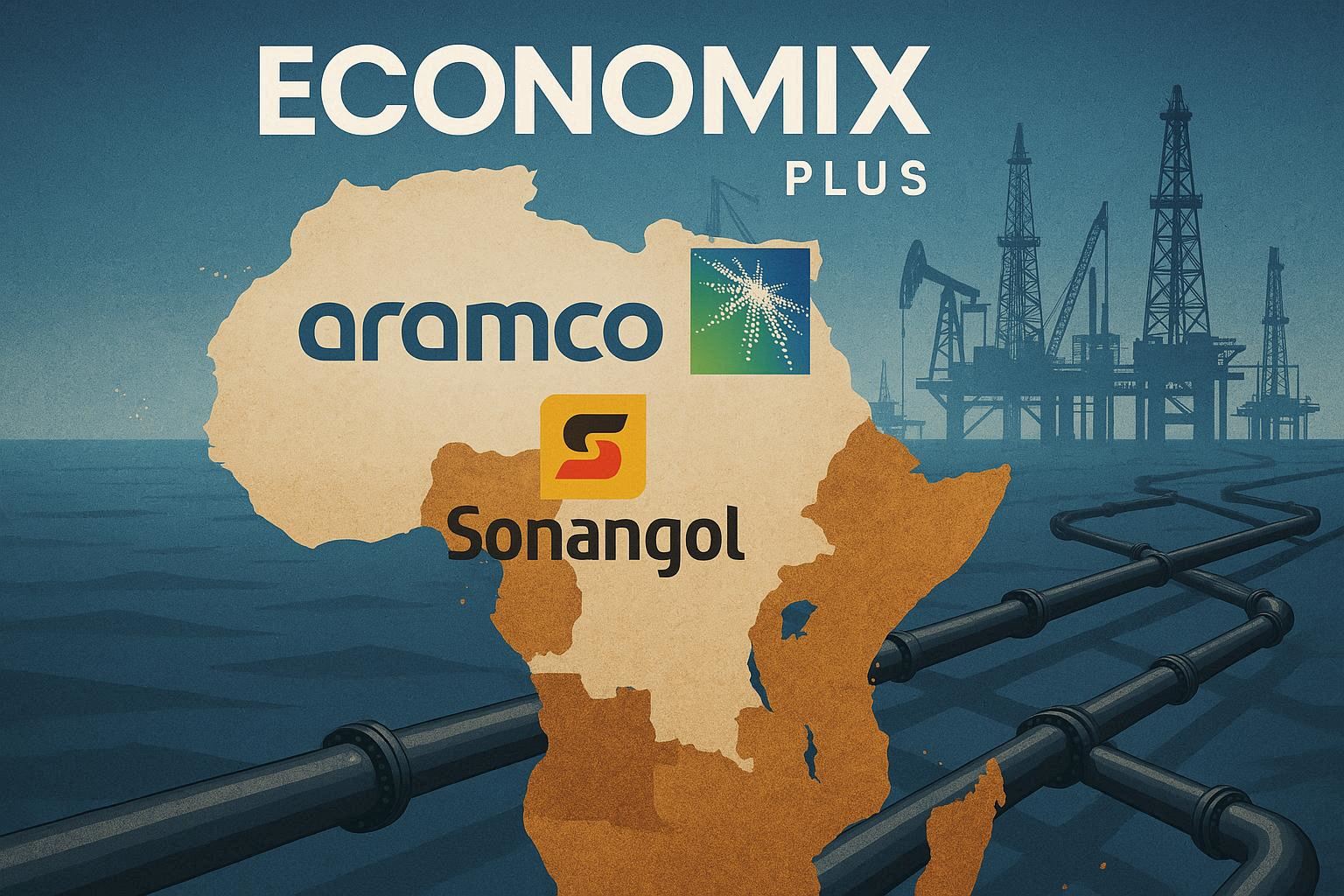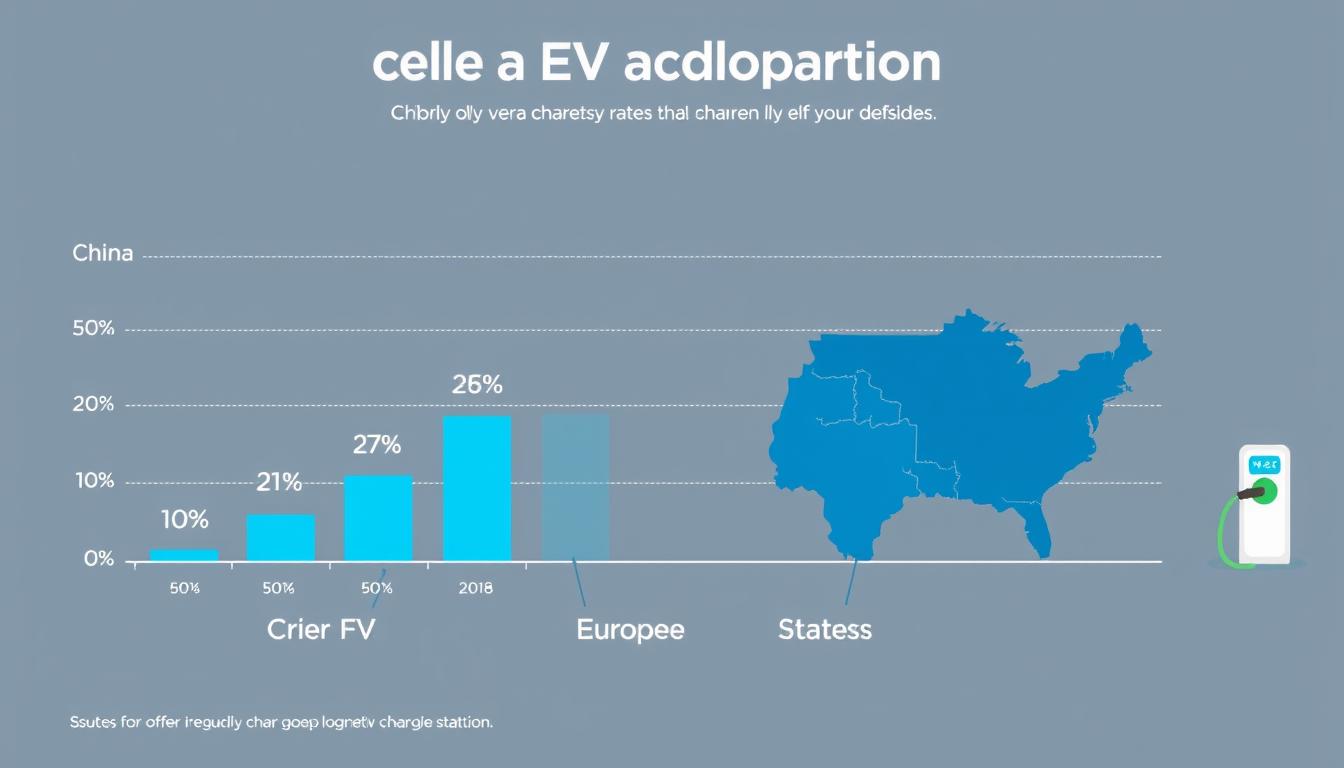Qatar famously shares the world’s largest natural gas deposit, the North Field, with Iran. This endowment has positioned Qatar as a key player in the global energy market. As the US and Australia have ramped up capacity, Qatar has temporarily fallen to third place.
However, Qatar is poised to reclaim its top spot through a colossal phased increase in its production capacity. ING analysts predict that this expansion will take Qatar’s export capacity from 105 billion cubic meters to 193 billion cubic meters by 2030, an increase of over 80%. This ambitious plan underscores Qatar’s commitment to playing a leading role in the global energy transition.
Key Takeaways
- Qatar’s vast natural gas reserves position it as a key player in the global energy market.
- The country’s phased production capacity increase is expected to boost its LNG exports significantly.
- QatarEnergy’s expansion plans aim to reclaim its position as the world’s leading LNG exporter.
- The global energy transition is driving demand for cleaner alternatives like LNG.
- Qatar’s strategic position and ambitious plans have significant implications for the international gas market.
Qatar’s Position in the Global LNG Market
Qatar’s strategic exploitation of its natural gas reserves has catapulted the nation to the forefront of the global LNG industry. The country’s meteoric economic ascent is largely attributed to the exploitation of the North Field, the world’s largest natural gas field, positioning Qatar as a leading LNG exporter. This remarkable achievement is not just a testament to the vast reserves available but also reflects Qatar’s innovative approaches to production and export strategies.
By investing heavily in state-of-the-art technology and infrastructure, Qatar has maximized the extraction and processing of its natural gas, ensuring that it meets the rising global demand for cleaner energy sources. As a result, the country has established itself as a pivotal player in the international energy landscape, with its LNG exports playing a crucial role in supporting energy security across various regions.
From Regional Player to Global Leader
Qatar’s journey to becoming a global LNG leader began with the discovery and exploitation of the North Field. This vast gas field has transformed Qatar’s economic landscape, enabling it to become a major player in the global energy market. With significant gas production capacities, Qatar has emerged as a reliable supplier to meet the world’s growing energy demands.
The Strategic Importance of the North Field
The North Field is Qatar’s primary asset, boasting substantial gas reserves and production capacity. This field is crucial for sustaining Qatar’s dominance in the LNG market, with its vast resources enabling the country to maintain its position as a leading exporter. The geopolitical significance of Qatar’s position in the global energy landscape has been underscored by recent global events, including Russia’s invasion of Ukraine, which has further highlighted Qatar’s strategic importance as a stable gas supplier.
Qatar’s gas export revenues have surged, bolstering its sovereign wealth fund, the Qatar Investment Authority, to an estimated valuation of $450 billion in 2023. This significant revenue has been instrumental in Qatar’s broader economic diversification efforts, solidifying its position in the global market.
The North Field Expansion: Transforming Global LNG Supply
Qatar’s North Field Expansion project is set to revolutionize the global LNG supply landscape. This ambitious project aims to increase Qatar’s LNG production capacity from 77 million tons to 142 million tons annually by 2030. The expansion is a critical component of Qatar’s strategy to become a leading player in the global LNG market.
Increasing Production Capacity
The North Field Expansion involves a phased approach, including the North Field East (NFE) and North Field South projects. These projects are expected to drive technological innovations and significant investments in LNG production infrastructure. The expansion will enable Qatar to meet the growing global demand for cleaner energy sources.
The production capacity increase is expected to have a profound impact on the global LNG market. With a potential market share of nearly 25% by the end of the decade, Qatar is poised to strengthen its leadership in the industry. The expansion will also enable Qatar to outpace competitors like the US and Australia.
Economic and Geopolitical Implications
The North Field Expansion will have significant economic implications for Qatar’s national economy. The project is expected to drive revenue increases, create jobs, and contribute to GDP growth. The expansion will also enhance Qatar’s diplomatic influence and trade relationships.
From a geopolitical perspective, the North Field Expansion will reshape the global LNG supply landscape. Qatar’s increased production capacity will improve global energy security and support the transition away from coal and oil. As countries continue to seek cleaner energy sources, Qatar’s LNG production will play a critical role in meeting this demand.
Key benefits of the North Field Expansion include:
- Increased LNG production capacity to meet growing global demand
- Enhanced economic benefits for Qatar, including revenue growth and job creation
- Improved global energy security through a more diversified LNG supply
How QatarEnergy Company Leads the Global LNG Transformation
QatarEnergy is at the forefront of the global liquefied natural gas (LNG) transformation, driven by its strategic rebranding and expanded global ambitions. The company’s leadership under CEO Saad Sherida Al-Kaabi has been instrumental in shaping its emergence as a dominant force in the LNG market.
Rebranding Strategy and Global Vision
The rebranding of Qatar Petroleum to QatarEnergy was a strategic move to better compete with large portfolio players like BP plc and Shell plc. With a combined LNG portfolio of 100 million tons, these companies control approximately 25% of the global market. QatarEnergy’s rebranding reflects its expanded global vision and commitment to becoming a world leader in LNG trading.
As CEO Saad Sherida Al-Kaabi stated, “I am confident that QatarEnergy Trading will accelerate its efforts to deliver on our aspiration of becoming a world leader in LNG trading in the near future.” This vision is supported by QatarEnergy’s integrated business model, which spans upstream production, midstream processing, and downstream marketing.
Competitive Advantages in the LNG Market
QatarEnergy’s competitive advantages in the LNG market are multifaceted. The company benefits from low production costs, access to abundant gas reserves, state backing, and advanced technological capabilities. These advantages enable QatarEnergy to maximize value across the LNG value chain and compete effectively with established players.
| Competitive Advantage | Description | Benefit |
|---|---|---|
| Low Production Costs | QatarEnergy’s production costs are among the lowest in the industry. | Enhanced competitiveness in the global LNG market. |
| Abundant Gas Reserves | Access to significant gas reserves supports long-term production. | Ensures supply security and long-term contracts. |
| State Backing | Support from the Qatari government enhances financial stability. | Enables large-scale investments and strategic acquisitions. |
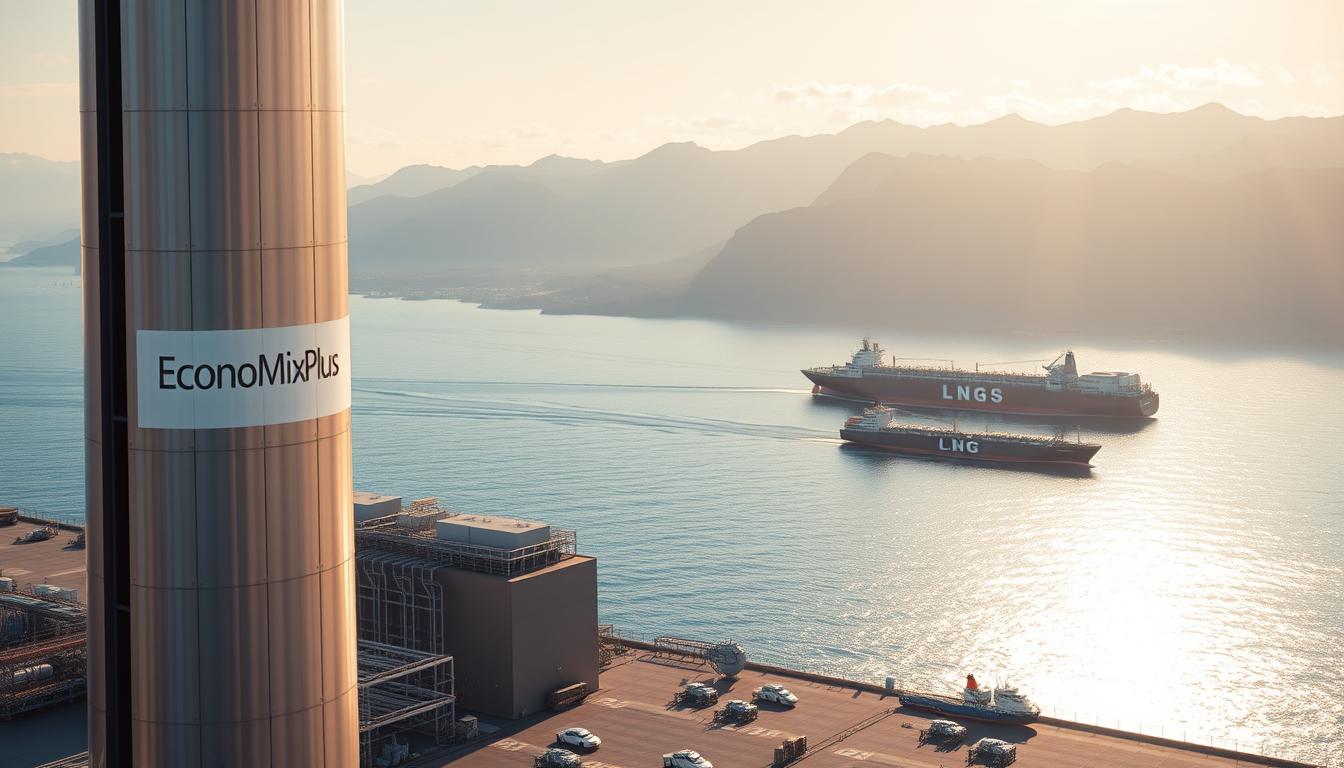
QatarEnergy’s Global Portfolio Expansion
QatarEnergy is aggressively expanding its global LNG portfolio through strategic acquisitions and partnerships. This move is part of the company’s broader strategy to achieve a globally diversified portfolio of third-party and equity LNG.
Strategic Acquisitions and Partnerships
QatarEnergy is enhancing its global reach through strategic partnerships with major international energy companies such as ExxonMobil, Shell, and TotalEnergies. These collaborations are crucial in expanding QatarEnergy’s capabilities and influence across the global energy market. The company is also acquiring regasification assets across Europe and Asia, including terminals in the UK, Belgium, France, and Italy, to secure market access for Qatari LNG.
These strategic moves are expected to boost QatarEnergy’s export capacity and strengthen its position in the global LNG market. By diversifying its portfolio, QatarEnergy is better positioned to meet the growing demand for natural gas worldwide.
The Golden Pass LNG Terminal and Other International Projects
One of QatarEnergy’s flagship international projects is the Golden Pass LNG Terminal in Texas, a joint venture with ExxonMobil. With QatarEnergy owning 70% of the project and ExxonMobil holding 30%, the terminal is set to start LNG exports next year. ExxonMobil LNG Asia Pacific will market 30% of the LNG produced, while QatarEnergy Trading LLC will market the remaining 70%. This project is a significant step in QatarEnergy’s global expansion strategy, enhancing its LNG export capabilities.
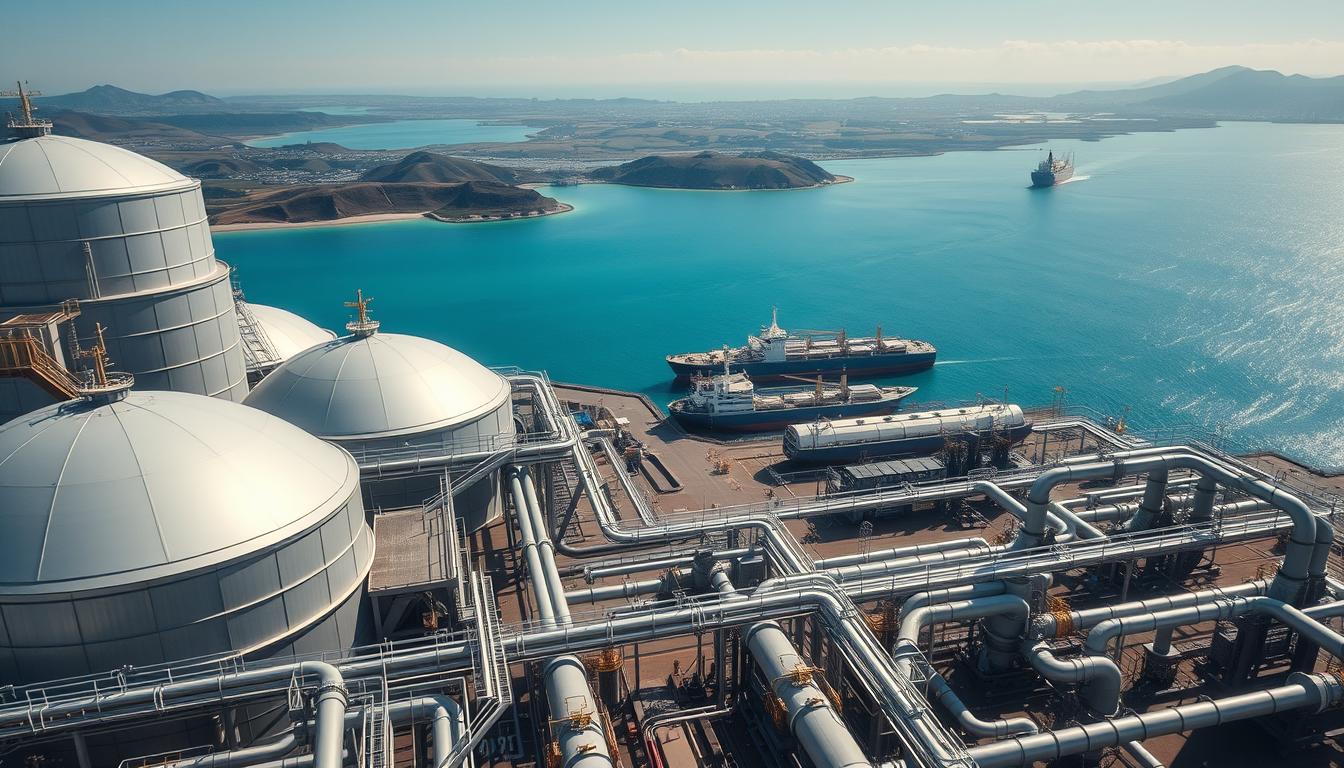
The Golden Pass LNG Terminal is a testament to QatarEnergy’s commitment to becoming a fully integrated international energy company. With projects like Golden Pass, QatarEnergy is poised to play a significant role in the global LNG sector for years to come.
Innovative Trading Strategies and Market Positioning
QatarEnergy’s foray into trading is part of a broader industry trend where traditional producers are eyeing trading margins. According to Vortexa Ltd.’s Felix Booth, head of LNG, “Traditional producers, like large national oil companies, and even some of the majors, are increasingly eyeing trading margins that other firms are making on their products.” This shift is driven by the potential to add significant value to their upstream production and refining profits.
QatarEnergy Trading: Competing with Portfolio Players
QatarEnergy is positioning itself to compete with established portfolio players like BP, Shell, and TotalEnergies in the global LNG trading arena. By leveraging its growing production capacity and global asset portfolio, QatarEnergy aims to enhance its trading capabilities and capture additional value across the LNG value chain. For more insights on global gas markets, refer to this analysis.
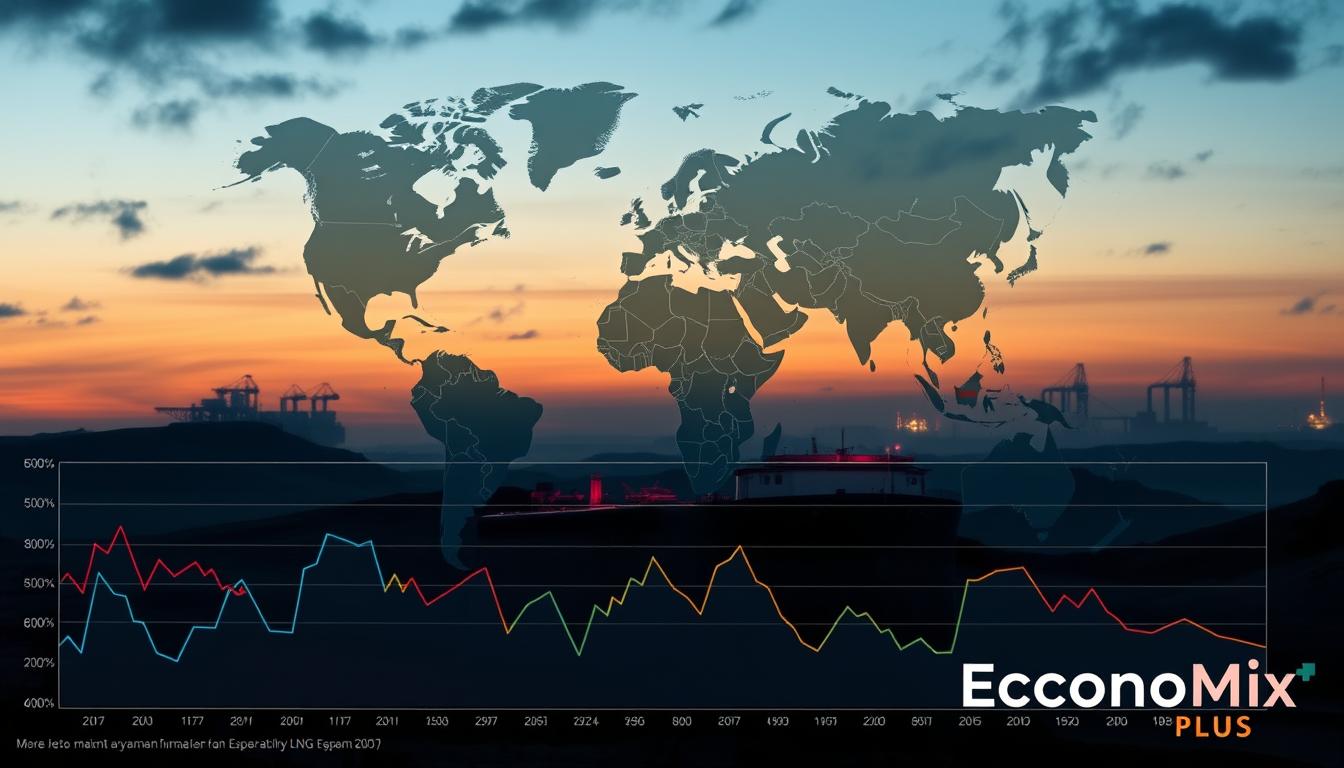
Long-term Contracts vs. Spot Market Flexibility
QatarEnergy is adopting a balanced approach to long-term contracts and spot market sales. This flexibility allows the company to maximize value while maintaining supply security. Recent long-term supply agreements, including 27-year contracts with European buyers and Asian customers, secure market share while providing stable revenue. The table below summarizes the key aspects of QatarEnergy’s trading strategy.
| Strategy Component | Description | Benefits |
|---|---|---|
| Long-term Contracts | 27-year agreements with European and Asian buyers | Secured market share, stable revenue |
| Spot Market Sales | Flexibility to capitalize on market fluctuations | Maximized value, supply security |
| Growing Production Capacity | Increased LNG production to meet demand | Enhanced trading capabilities, additional revenue |
By adapting to evolving LNG pricing mechanisms, including the shift from oil-indexed contracts to gas hub pricing, QatarEnergy is well-positioned to navigate the changing global energy landscape.
Decarbonization Initiatives in LNG Production
In response to growing environmental concerns, QatarEnergy is implementing comprehensive decarbonization initiatives in LNG production. The company’s commitment to reducing carbon intensity is reflected in its ambitious targets to decrease carbon emissions in LNG facilities by 35% and in upstream operations by 25% by 2035.
Carbon Capture and Storage Technologies
QatarEnergy is investing heavily in carbon capture and storage (CCS) technologies to minimize the carbon footprint of its LNG production. A key project is the establishment of the world’s largest CCS facility in the LNG industry at Ras Laffan, capable of capturing and sequestering up to 11 million tons of carbon annually. This initiative is part of the North Field expansion project, underscoring QatarEnergy’s commitment to reducing emissions while increasing LNG production capacity.
CCS technology plays a crucial role in QatarEnergy’s decarbonization strategy, enabling the company to capture CO2 emissions from its LNG facilities and store them underground, thereby reducing the overall carbon intensity of its operations.
Reducing Carbon Intensity in LNG Facilities
QatarEnergy is also focusing on reducing carbon intensity in its LNG facilities through various operational improvements and technological innovations. This includes enhancing monitoring and leak detection programs to minimize methane emissions, a potent greenhouse gas. By implementing these measures, QatarEnergy aims to produce “low-carbon LNG,” providing a competitive edge in markets with stringent environmental regulations, such as the European Union.
As stated by the company’s officials, “Our decarbonization efforts are aligned with Qatar’s National Environment and Climate Change Strategy, positioning us to meet the growing demand for cleaner energy solutions.” This proactive approach not only supports Qatar’s climate goals but also enhances QatarEnergy’s market position in the global LNG industry.
Renewable Energy Integration and Diversification
QatarEnergy’s commitment to renewable energy integration is a crucial step in Qatar’s broader energy transition and decarbonization efforts. As the global energy landscape evolves, QatarEnergy is diversifying its portfolio by investing in renewable energy projects.
Qatar’s National Renewable Energy Strategy
Qatar has set ambitious targets for renewable energy adoption as part of its National Renewable Energy Strategy. The strategy aims to increase utility-scale integrated renewable power generation to 4GW by 2030, representing approximately 30% of the nation’s power generation. This initiative is expected to reduce Qatar’s reliance on natural gas for domestic power generation, thereby increasing the volume available for export.
The strategy also emphasizes the need for a comprehensive climate-centered legal and regulatory framework to support the energy transition. While Kahramaa currently oversees electricity generation regulations, a more specialized regulatory approach will be vital to achieving Qatar’s decarbonization targets.
Solar Power Projects and Future Expansion
QatarEnergy is leveraging the country’s natural advantages for solar energy generation, including abundant sunlight and extensive land availability. Major solar power projects include the 800MW Al Kharsaah solar plant, the 875MW Industrial Cities project, and the upcoming 2GW Dukhan plant.
| Solar Power Project | Capacity (MW) | Status |
|---|---|---|
| Al Kharsaah Solar Plant | 800 | Operational |
| Industrial Cities Project | 875 | Operational |
| Dukhan Plant | 2000 | Upcoming |
These projects not only contribute to Qatar’s renewable energy targets but also extend the lifespan of its natural gas reserves by reducing domestic consumption and maximizing export potential. QatarEnergy’s renewable energy investments position the company for long-term sustainability while creating new business opportunities in the rapidly growing clean energy sector.
Challenges and Opportunities in the Energy Transition
As the world shifts towards renewable energy, QatarEnergy faces both challenges and opportunities in maintaining its position as a leading LNG producer. The company’s substantial investments in natural gas infrastructure are potentially at risk of becoming “stranded assets” as climate policies become more stringent.
Navigating Climate Regulations and Carbon Taxes
The European Union’s introduction of methane intensity regulations in August 2024 poses a significant near-term risk for LNG suppliers like QatarEnergy. The regulations require suppliers to submit methane performance profiles, potentially impacting their competitiveness in the market. Additionally, the EU’s expansion of its Emission Trading Scheme to include shipping subjects LNG cargoes entering Europe to a carbon tax, further complicating the market dynamics.
QatarEnergy must navigate these evolving regulatory landscapes to maintain its market share. According to recent developments, the company is strategically positioning itself to mitigate these risks by leveraging its low-carbon LNG production capabilities as a competitive advantage in markets with strict environmental standards. For more information on the impact of such regulations, visit The Banker.
Positioning LNG as a Transition Fuel
QatarEnergy is emphasizing the role of LNG as a critical transition fuel in the global energy mix, highlighting its lower carbon intensity compared to coal and oil for power generation. By promoting LNG as a cleaner alternative, the company is capitalizing on its competitive advantages in the market. This strategic positioning is crucial as the global demand for cleaner energy sources continues to grow.
The company’s efforts to reduce carbon intensity in its LNG facilities and its investments in decarbonization initiatives are key to maintaining its market leadership. As the energy transition continues to unfold, QatarEnergy’s ability to adapt to changing climate regulations and market dynamics will be pivotal in shaping its future success.
Conclusion: QatarEnergy’s Role in Shaping the Future of Global Energy
With its comprehensive strategy and commitment to decarbonization, QatarEnergy is leading the charge in the global energy transition. The company’s emergence as a low-cost LNG producer is a game-changer in the global energy landscape.
QatarEnergy’s strategy encompasses massive production expansion, global portfolio diversification, innovative trading approaches, decarbonization initiatives, and renewable energy integration. This multi-faceted approach positions the company for success in a rapidly evolving market.
As the world shifts towards lower-carbon energy sources, QatarEnergy’s ability to produce LNG at a low cost and with reduced emissions creates a powerful competitive advantage. The company’s efforts to make its LNG production as low-emission as possible are particularly noteworthy, with exports of certified net-zero or carbon-neutral LNG.
QatarEnergy’s transformation has broader implications for global energy security, international trade patterns, and the pace of the worldwide energy transition over the coming decade. As the company balances commercial success with environmental responsibility, it is poised to reshape the global energy landscape.
FAQ
▶
▶
▶
▶
▶
▶
▶
▶
